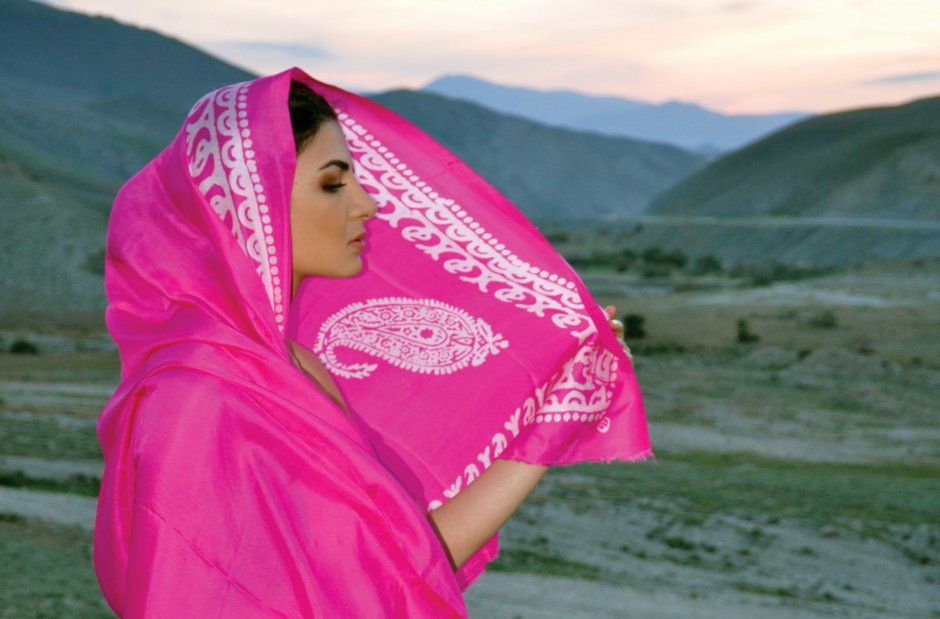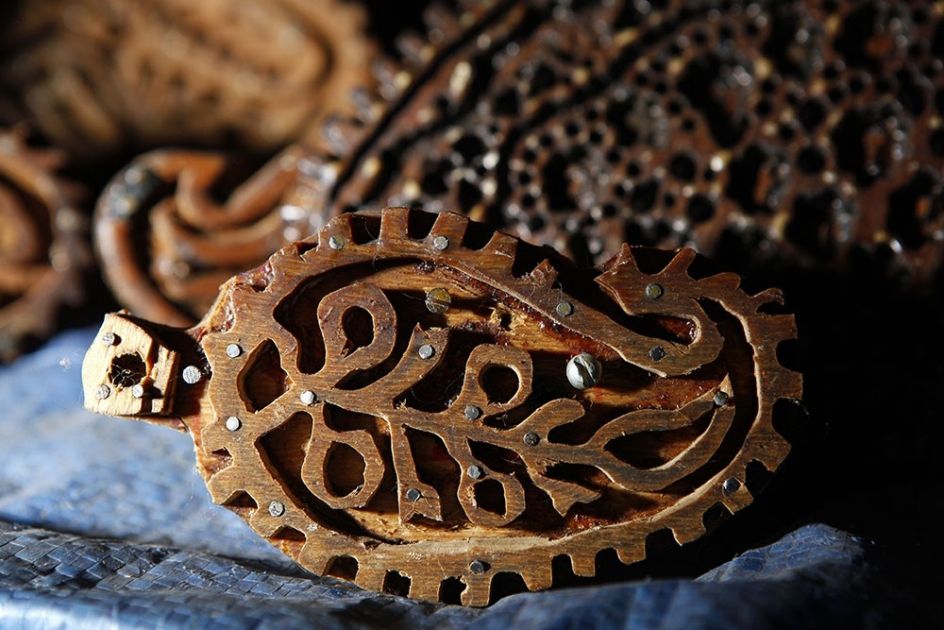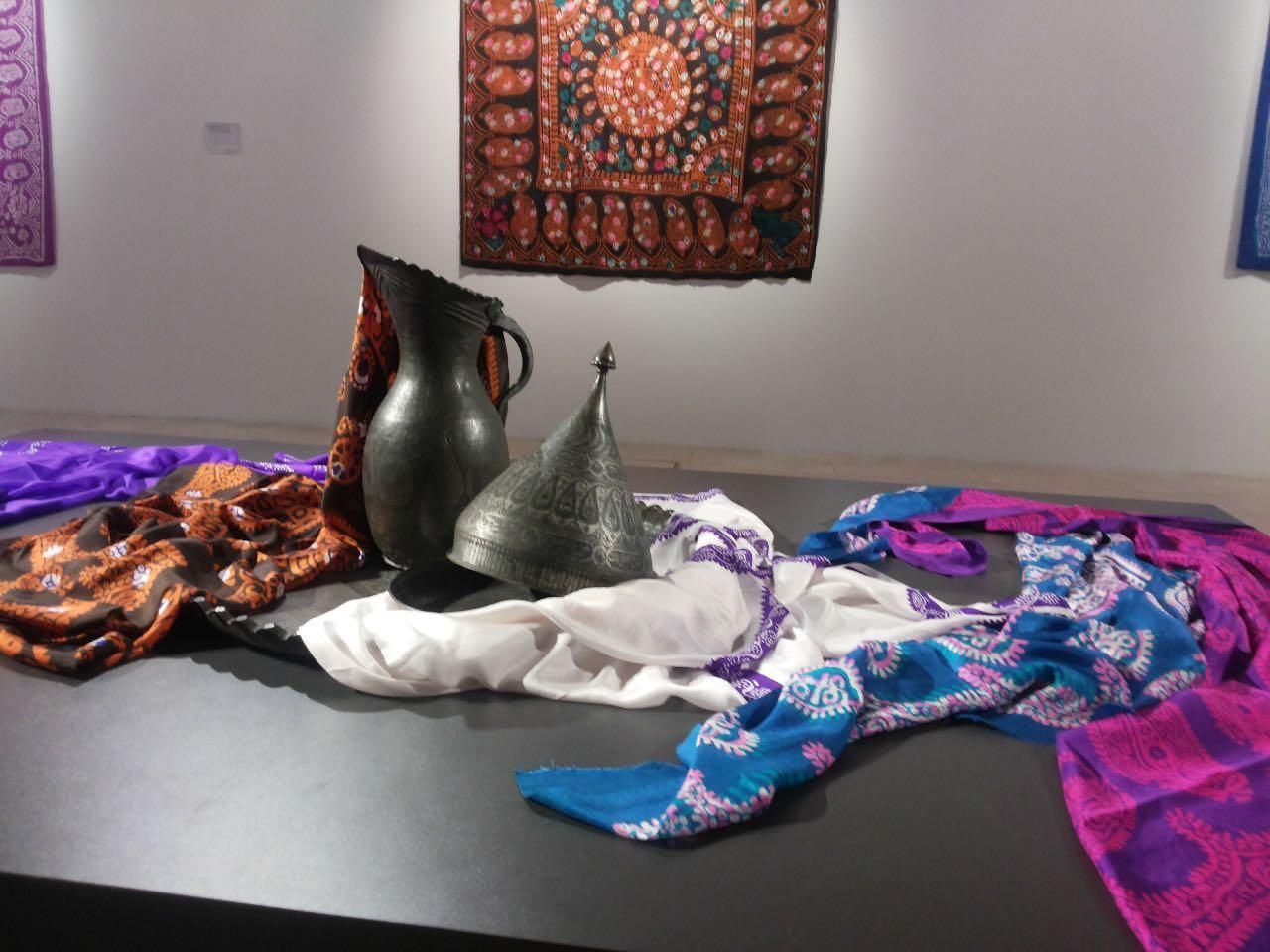Azerbaijan's traditional headscarf stands out for its beauty, significance, and historical importance.
Also known as kelagayi, this stunning headdress has been an integral part of Azerbaijani fashion for centuries.

The kelagayi is a silk square-shaped scarf, typically measuring around 110 x 110 cm.
This art form involves applying wax to specific areas of the fabric and then dipping it into various natural dyes made from natural dyes like barberry, paradise apples, saffron, currants, etc.
The wax acts as a resist, creating unique and detailed designs that are a true reflection of Azerbaijani craftsmanship.
Silk fabrics are boiled so that they do not fade in the future. That's why kelagayi may wear out, but it will never lose its original colour.
One of the most fascinating aspects of the kelagayi is its symbolism.
Each pattern and colour combination carries a specific meaning, which not only adds a special charm to the headscarf but also provides a deeper connection to Azerbaijani culture and legacy.
Different parts of Azerbaijan are famous for their original kelagayi ornaments.
For example, Absheron and Sheki were characterised by a large, massive pattern; small patterns are common for silk headscarves in Shamakhi, while Garabagh, Ganja, and Gazakh produce both small and large patterns.

Since the Middle Ages, centres of traditional silk weaving have been formed in Sheki, Shirvan, Baskal, and Ganja.
Traditionally, the kelagayi was worn by Azerbaijani women to signify their marital status. Unmarried women would wear a scarf with a specific pattern, while married women would wear a different design.
Today, however, the kelagayi is worn by women of all marital statuses as a symbol of national identity and pride.

It is often worn during special occasions such as weddings, festivals, and cultural events, adding a touch of elegance and tradition to any fashion look.
This magnificent head accessory continues to be worn proudly by women of all ages.
A colourful Kelagayi Festival has recently been held in Baku, bringing together craftswomen from different parts of Azerbaijan.
At the festival, the craftswomen demonstrated their talents and skills through unique art works, including vibrant silk scarves, traditional gowns, and gurama products.
Gurama is a type of handicraft, an original patchwork technique, in which, according to the principle of a mosaic, a single piece of fabric is created from pieces of multi-colored fabric. The secrets and techniques of this art were passed on from generation to generation.
Now simple and original geometric patterns are replaced by more complex combinations of colors and shapes.
Work on the revival of Azerbaijan's ancient gurama art is currently underway. The country hosted the 2nd National Gurama Festival this year.
The large-scale event featured numerous master classes, demonstrations of arts and crafts, and a sales fair in Baku and Shamakhi.
The Kelagayi Festival in Baku left a lasting impression on all the guests.
The festival will further continue to delight and inspire art lovers from Azerbaijan and abroad.